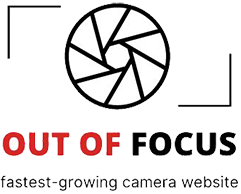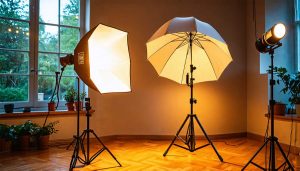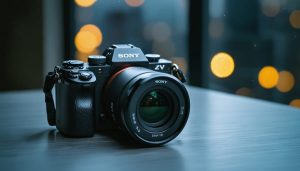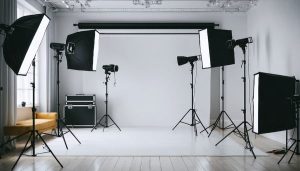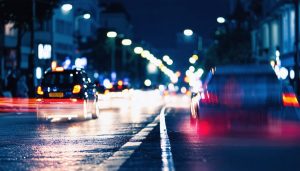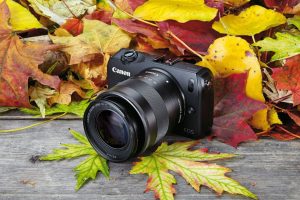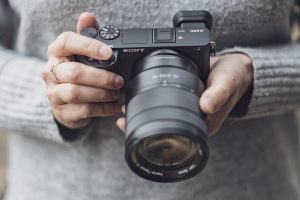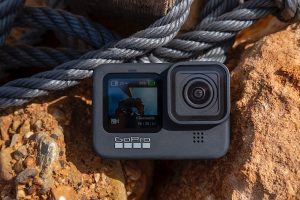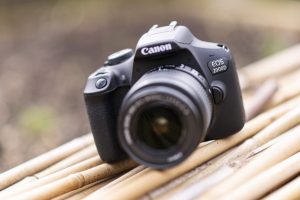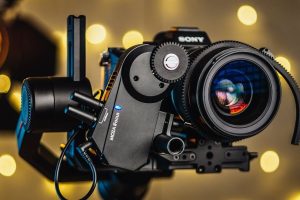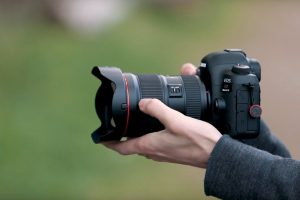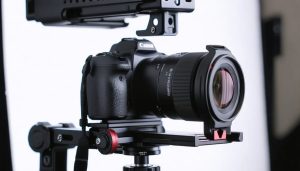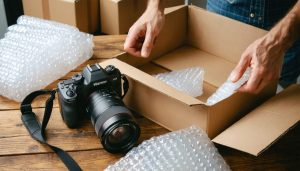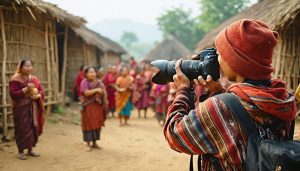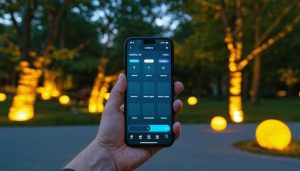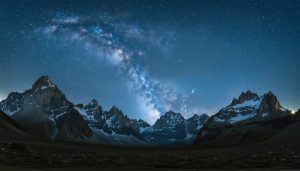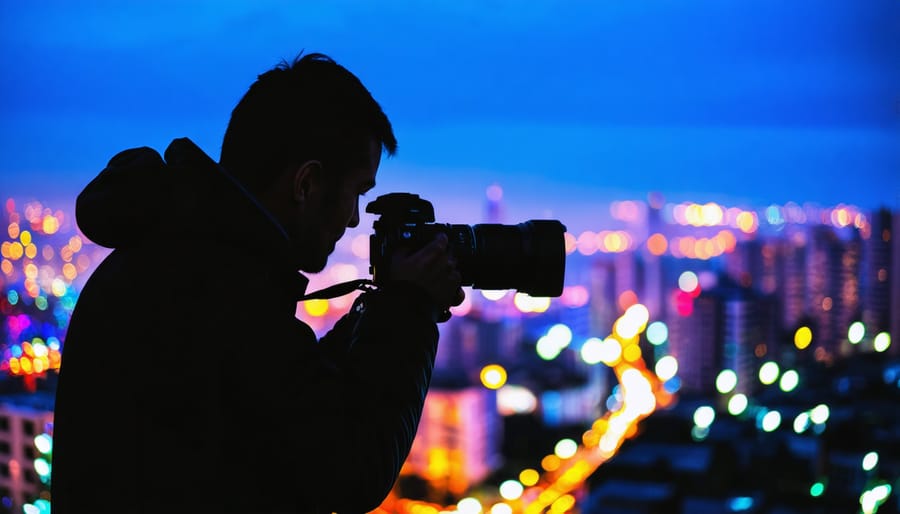
Master low-light photography with precision zoom lenses that deliver exceptional performance when light becomes scarce. Whether shooting indoor events, twilight landscapes, or capturing stunning low light photos, the right zoom lens transforms challenging conditions into creative opportunities. Professional photographers rely on fast zoom lenses with constant f/2.8 apertures or wider, combining versatile focal ranges with superior light-gathering capabilities. These specialized optics feature advanced coating technologies that minimize flare and ghosting while maximizing contrast and clarity in dim environments. Modern low-light zoom lenses incorporate sophisticated image stabilization systems, enabling sharp handheld shots at slower shutter speeds without compromising image quality. Understanding these crucial features helps photographers select the perfect lens for their specific low-light challenges, whether documenting dimly lit wedding receptions or capturing the subtle details of evening cityscapes.
Understanding Low Light Zoom Lenses
What Makes a Zoom Lens ‘Fast’
A zoom lens’s “speed” primarily refers to its maximum aperture – the widest opening through which light can enter. In photography, we measure this using f-stops, with smaller f-numbers indicating larger apertures. For example, an f/2.8 aperture lets in twice as much light as an f/4.
What makes a zoom lens particularly impressive is maintaining a constant maximum aperture throughout its focal range. While many consumer zooms might start at f/3.5 at their widest and shift to f/5.6 when zoomed in, professional “fast” zoom lenses often maintain f/2.8 across their entire range. This consistency is crucial for low-light photography, as it ensures you can maintain faster shutter speeds regardless of focal length.
Think of aperture like your pupils – in dim conditions, they dilate (open wider) to let in more light. Similarly, a fast zoom lens with a wide maximum aperture gives you more flexibility in challenging lighting conditions. This larger opening not only allows more light to reach your camera’s sensor but also creates that sought-after shallow depth of field with beautiful background blur.
The trade-off? Fast zoom lenses tend to be larger, heavier, and more expensive than their slower counterparts. However, for photographers who frequently work in low-light situations, this investment can be the difference between getting the shot and missing it entirely.
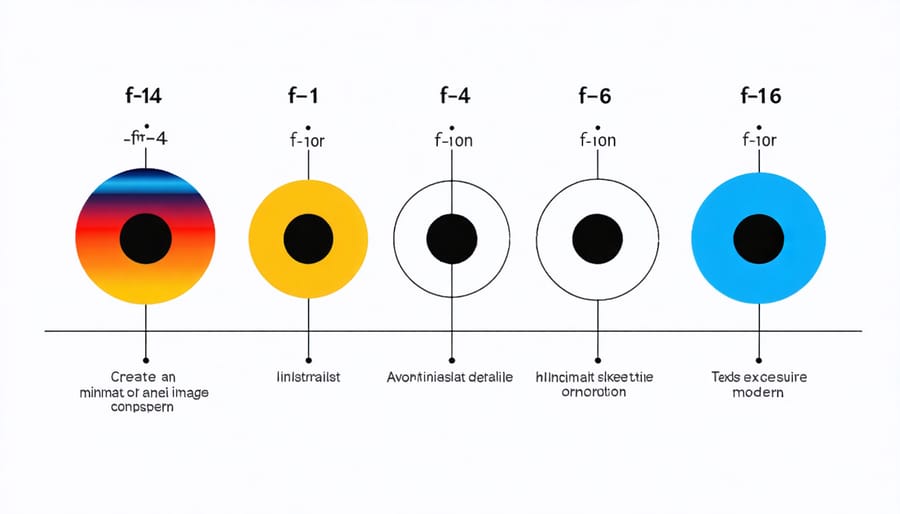
The Trade-off Between Zoom Range and Speed
When it comes to zoom lenses, there’s always a delicate balance between versatility and light-gathering capability. The wider the zoom range, the more challenging it becomes for manufacturers to maintain a large maximum aperture throughout that range. This is why you’ll often see zoom lenses with variable apertures, such as f/3.5-5.6, where the maximum aperture decreases as you zoom in.
For instance, a 24-70mm f/2.8 lens can maintain its wide f/2.8 aperture throughout its zoom range, making it excellent for low-light shooting. However, if you’re looking at a 24-200mm lens, physics and practical limitations usually result in a variable aperture design that might start at f/3.5 and close down to f/6.3 at the telephoto end.
This trade-off directly impacts your low-light performance. While a broader zoom range offers more compositional flexibility, it often means sacrificing light-gathering ability at longer focal lengths. Professional photographers often choose multiple f/2.8 zooms with shorter ranges instead of a single lens with a broader range but smaller maximum aperture. This approach ensures consistent low-light performance across all focal lengths, albeit at the cost of convenience and potentially higher expense.
Key Features to Consider
Image Stabilization Technology
Image stabilization technology is a game-changer for low-light photography, particularly when using zoom lenses. Whether it’s called IS, VR, or OS (depending on the manufacturer), this feature compensates for camera shake by using gyroscopic sensors and floating lens elements, allowing you to shoot at significantly slower shutter speeds while maintaining sharp images.
In low-light conditions, this technology becomes invaluable. Without stabilization, the general rule of thumb suggests shooting at a shutter speed of 1/focal length to avoid blur. However, with modern stabilization systems offering 4-6 stops of compensation, you can potentially shoot handheld at 1/15th or even 1/8th of a second while maintaining crisp results.
For zoom lenses, stabilization becomes even more crucial as longer focal lengths amplify camera shake. The latest stabilization systems are particularly effective when shooting in dimly lit venues, capturing street scenes at dusk, or photographing indoor events where flash isn’t permitted. Some advanced systems even offer specific modes for panning and tripod detection, ensuring optimal performance across different shooting scenarios.
Remember that while stabilization helps combat camera shake, it won’t freeze subject motion – you’ll still need appropriate shutter speeds for moving subjects.
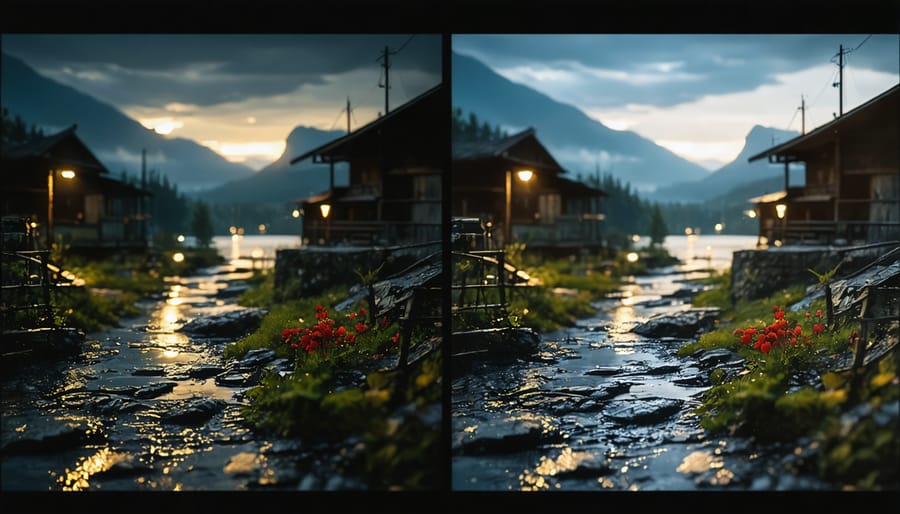
Autofocus Performance
Autofocus performance in low light conditions can make or break your shooting experience, and modern zoom lenses have made significant strides in this area. Most current-generation zoom lenses utilize advanced motors and algorithms to maintain focus accuracy even when light is scarce.
High-end zoom lenses often feature ultrasonic or stepping motors that perform admirably in dim conditions, though they may hunt slightly more than in bright light. The key is to give your lens the best chance of success by targeting high-contrast areas in your scene, even if they’re dimly lit. Many photographers find that focusing on edges or areas with distinct tonal differences yields better results than attempting to focus on flat, uniform surfaces.
It’s worth noting that AF performance can vary significantly between camera bodies and lens combinations. Some systems maintain reliable autofocus down to -4 EV or lower, while others might struggle below -2 EV. When shooting in extremely challenging conditions, switching to manual focus might actually be more efficient, especially if your lens features a good focus distance scale and smooth focusing ring.
Remember that central AF points typically perform better in low light than peripheral points, so consider using the center point and recomposing when accuracy is crucial.
Build Quality and Weather Sealing
When shooting in low-light conditions, especially during nighttime or in dimly lit indoor venues, your lens needs to be more than just optically excellent – it needs to be built to last. Professional-grade low-light zoom lenses typically feature robust metal construction that can withstand frequent use and occasional bumps in challenging environments.
Weather sealing is particularly crucial for night photographers who often work in adverse conditions. A properly sealed lens protects against moisture, dust, and light rain, allowing you to continue shooting even when the weather isn’t ideal. Look for rubber gaskets around the mount, focus ring, and zoom ring, as these are common entry points for environmental elements.
The build quality also affects the smoothness of operation. Premium low-light zoom lenses often feature well-dampened zoom and focus rings that provide precise control without being too loose or tight. This is essential when making quick adjustments in dynamic low-light situations, such as concert photography or event coverage.
Internal focusing mechanisms are another important feature, as they prevent the lens from changing length during zooming or focusing. This helps maintain balance and prevents dust from being drawn into the lens, which is particularly important when working in challenging environments.
While better build quality often means increased weight, the trade-off is worthwhile for serious photographers who need their equipment to perform reliably in demanding situations.
Top Low Light Zoom Lenses for Different Scenarios
Event and Wedding Photography
Event and wedding photographers face unique challenges when capturing precious moments in dimly lit venues. For successful low light event photography, a versatile zoom lens with excellent light-gathering capabilities is essential.
The 70-200mm f/2.8 stands as the gold standard for event photography, offering the perfect combination of reach and speed. This focal range lets you capture intimate moments during ceremonies without being intrusive, while the constant f/2.8 aperture delivers beautiful background blur and excellent low-light performance.
For closer quarters, the 24-70mm f/2.8 proves invaluable. This workhorse lens handles everything from group shots to dance floor action, maintaining image quality even when the lights go down. Its versatile focal range makes it perfect for documenting getting-ready moments and reception details.
Budget-conscious photographers might consider the 50-135mm f/2.8 from third-party manufacturers, which offers similar capabilities to the 70-200mm at a lower price point. For crop-sensor cameras, the Sigma 17-50mm f/2.8 provides excellent value while maintaining professional-quality output in challenging lighting conditions.
Remember to look for lenses with effective image stabilization systems, as they’ll help you maintain sharp images at slower shutter speeds when flash photography isn’t appropriate, such as during quiet ceremony moments or candid reception shots.
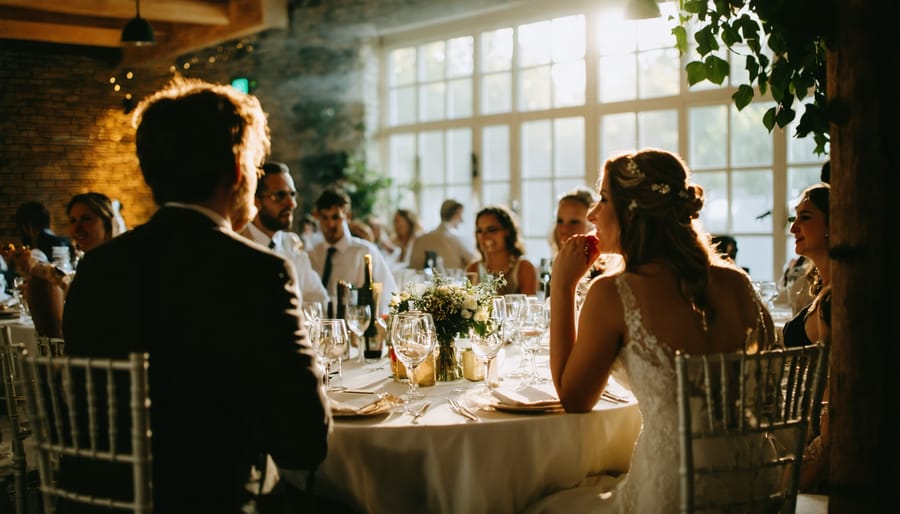
Sports and Action
When it comes to capturing fast-moving action in challenging light conditions, having the right zoom lens can make all the difference. Indoor sports venues and dimly lit arenas present unique challenges that demand specific lens capabilities.
For indoor sports photography, a fast zoom lens with a constant f/2.8 aperture is often considered the gold standard. These lenses allow you to maintain faster shutter speeds while tracking moving subjects, whether you’re shooting basketball under fluorescent lighting or capturing a gymnastics routine from the sidelines.
The 70-200mm f/2.8 is particularly popular among sports photographers, offering the perfect balance of reach and speed. This focal range lets you get close to the action while maintaining a safe distance from the playing field. The constant f/2.8 aperture ensures consistent exposure throughout the zoom range, which is crucial when following fast-moving athletes.
For indoor court sports, the 24-70mm f/2.8 serves as an excellent complement, especially when you need to capture wider shots of team plays or when working in tighter spaces. The faster aperture also creates beautiful background blur, helping to isolate your subject from potentially distracting crowd elements.
Remember to consider image stabilization features when selecting your lens, as this can help maintain sharpness even at slower shutter speeds. This is particularly valuable when shooting in venues where flash photography isn’t permitted.
Street and Travel Photography
For street and travel photographers, a versatile low-light zoom lens is an invaluable companion. When exploring dimly lit alleyways, capturing bustling night markets, or documenting evening cityscapes, you need glass that can keep up with dynamic shooting conditions. The ideal travel zoom should strike a balance between portability and performance, typically featuring a constant aperture of f/2.8 or wider.
Many photographers find the 24-70mm f/2.8 range particularly useful for street photography, as it covers everything from environmental shots to intimate portraits. For those wanting to travel light, the newer f/4 variants offer excellent natural light photography techniques while maintaining a more compact form factor.
When shooting in tourist spots or cultural events, a 70-200mm f/2.8 can be invaluable, allowing you to capture candid moments from a respectful distance while maintaining excellent low-light performance. For urban exploration after sunset, image stabilization becomes crucial – modern IS systems can provide up to 5 stops of compensation, enabling sharp handheld shots even in challenging lighting conditions.
Consider weather sealing as well – many street and travel scenarios involve unpredictable weather, and you’ll want your lens to withstand light rain or dusty conditions. While premium weather-sealed options might cost more initially, they prove their worth during extended travel photography sessions.
Real-World Performance Tips
To get the most from your low light zoom lens, start by mastering your camera’s autofocus system. In challenging lighting conditions, switch to back-button focus and use the center focus point, which typically offers the best real-world low light performance. This technique ensures more consistent focusing when light levels drop.
Consider shooting at the lens’s widest aperture, but step down one-third to one-half stop for improved sharpness. For example, if your f/2.8 zoom lens is slightly soft wide open, try shooting at f/3.2 for a better balance between light gathering and image quality.
Stabilization is crucial – engage your lens’s image stabilization if available, but remember to turn it off when using a tripod. When handholding, maintain proper technique by tucking your elbows in and controlling your breathing. The general rule is to keep your shutter speed at least 1/focal length, but with modern stabilization, you can often shoot 3-4 stops slower.
Monitor your ISO carefully. While modern cameras handle high ISOs well, try to stay within your camera’s optimal range. It’s better to nail the exposure at ISO 3200 than to underexpose at ISO 1600 and push in post-processing.
Finally, carry a small LED light or flash for emergencies. Even if you prefer natural light, having backup illumination can save a shot when conditions become too challenging. Remember to periodically clean your lens elements – dust and fingerprints can further reduce contrast in low light situations.
Selecting the right low light zoom lens can significantly enhance your photography capabilities in challenging lighting conditions. Throughout this guide, we’ve explored the essential features to consider, from maximum aperture and focal length range to image stabilization and build quality. Remember that while prime lenses typically offer better low-light performance, modern zoom lenses have made impressive strides in versatility without severely compromising image quality. Whether you’re shooting events, concerts, or street photography, investing in a quality low-light zoom lens will expand your creative possibilities and help you capture stunning images in any lighting situation. Consider your specific needs, budget, and shooting style when making your final choice, and don’t hesitate to rent or test different options before making your investment. With the right lens in your kit, you’ll be well-equipped to tackle any low-light photography challenge with confidence.
